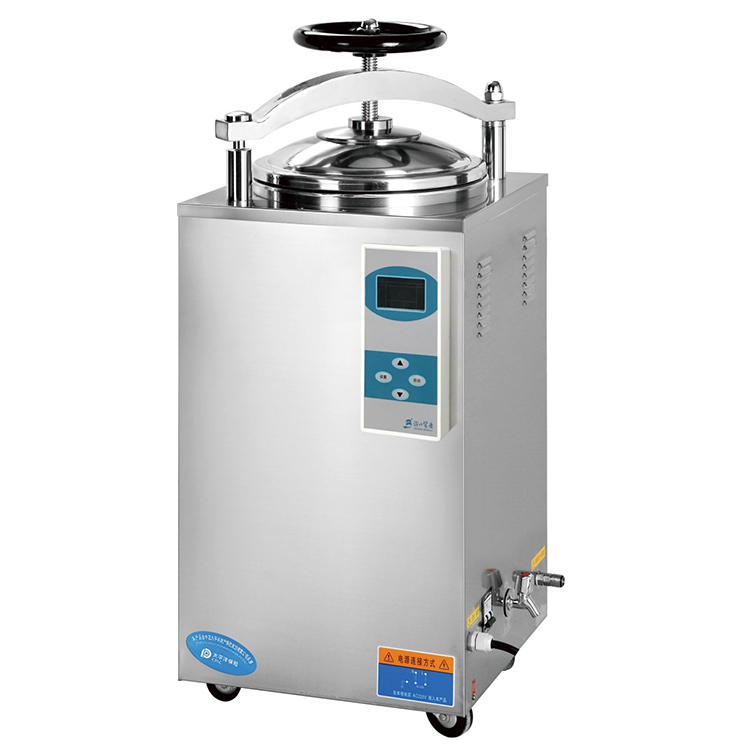Understanding Steam Sterilizers: A Key to Effective Sterilization
2025-02-07
Sterilization is essential in healthcare, laboratories, and industrial settings to ensure the safety of equipment and instruments. Among various sterilization methods, steam sterilizers stand out as one of the most effective and widely used solutions.
Steam sterilizers, also known as autoclaves, use high-pressure steam to eliminate bacteria, viruses, fungi, and other microorganisms. This article will explore how steam sterilizers work, their types, key benefits, and applications across different industries.
How Does a Steam Sterilizer Work
A steam sterilizer operates by using moist heat under high pressure to kill microorganisms. The process includes the following steps:
1. Heating and Pressurization
- Water is heated to generate steam, which fills the sterilization chamber.
- Pressure builds up to ensure steam reaches the necessary temperature.
2. Sterilization Phase
- The combination of heat, pressure, and time ensures thorough sterilization.
- Common temperatures range from 121°C to 134°C.
3. Drying and Cooling
- After sterilization, the steam is released, and the equipment is dried.
- The cooling phase ensures items are safe to handle.
Types of Steam Sterilizers
Different types of steam sterilizers are designed for various applications. The main types include:
1. Gravity Displacement Steam Sterilizers
- Use natural convection to remove air and replace it with steam.
- Suitable for medical instruments, laboratory glassware, and waste disposal.
2. Pre-Vacuum Steam Sterilizers
- Use a vacuum pump to remove air before introducing steam.
- Achieves faster and more efficient sterilization.
- Commonly used for complex surgical instruments and porous materials.
3. Flash Steam Sterilizers
- Designed for rapid sterilization in emergency situations.
- Used in hospitals for quickly sterilizing critical surgical tools.
4. Laboratory and Industrial Steam Sterilizers
- Large-capacity models used in pharmaceutical, food processing, and research industries.
- Handle bulk sterilization efficiently.
Key Benefits of Steam Sterilization
Steam sterilization offers numerous advantages over other sterilization methods:
1. Highly Effective
- Destroys all forms of microorganisms, spores, and viruses.
2. Eco-Friendly
- Uses water and heat instead of harmful chemicals.
3. Cost-Effective
- Lower operational costs compared to chemical sterilization.
4. Fast and Reliable
- Short sterilization cycles improve efficiency in hospitals and laboratories.
5. Safe for Most Equipment
- Ideal for medical tools, surgical instruments, and laboratory glassware.
Applications of Steam Sterilizers
Steam sterilizers are widely used in different industries, including:
1. Healthcare and Hospitals
- Sterilization of surgical instruments, medical devices, and hospital waste.
2. Laboratories and Research Facilities
- Used to sterilize glassware, media, and biohazardous waste.
3. Pharmaceutical Industry
- Ensures contaminant-free production of medicines and vaccines.
4. Food and Beverage Industry
- Sterilizes packaging, equipment, and food processing tools.
5. Veterinary and Dental Clinics
- Essential for sanitizing tools and instruments used in animal and dental care.
Best Practices for Using a Steam Sterilizer
To maximize efficiency and safety, follow these best practices:
1. Proper Loading
- Arrange instruments to allow steam circulation for effective sterilization.
2. Correct Temperature and Time Settings
- Follow manufacturer guidelines for temperature, pressure, and duration.
3. Regular Maintenance
- Clean and inspect the sterilizer to ensure optimal performance.
4. Use Sterilization Indicators
- Chemical and biological indicators help verify sterilization success.
5. Proper Drying and Storage
- Ensure instruments are completely dry before use to prevent contamination.
Conclusion
Steam sterilizers play a crucial role in infection control and contamination prevention across various industries. Their ability to provide fast, efficient, and eco-friendly sterilization makes them an essential tool for hospitals, laboratories, and manufacturing facilities.
By choosing the right steam sterilizer and following proper sterilization procedures, organizations can maintain high hygiene standards and ensure safety for both professionals and patients.



